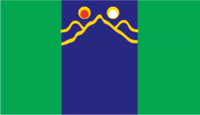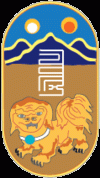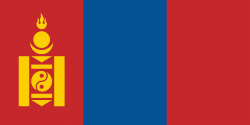Govisümber Province (Govĭ-Sumber)
 |
 |
Borjigon clan said in The Secret History of the Mongols: one of the world's greatest cultural and historical written relics was written in 1240—the year of white mouse. Genghis Khan is a grandson of the Bodanchar who is the heir of the Burte Chono. It is stated in the historical literature that Bodanchar had separated from his brothers and founded the Borjigon clan.
In 1691, when the Manchurian emperior Enkh-Amgalan made Mongolia its tributary state and divided four Mongolian aimags and seven khoshuus, there was founded Borjigon khoshuu of Setsen khan aimag.
In 1911, the name of the khoshuu was changed to Borjigon Setsen van khoshuu.
In 1923, the name was changed to Otsol Sansar uuliin khoshuu.
From 1931 onward, it was called Govisumber soum of the Töv aimag, Sumber soum of the Dornogovi aimag.
From 1991 onward, it was called Choir City.
From 1994 onward, it is called Govisumber aimag.
Map - Govisümber Province (Govĭ-Sumber)
Map
Country - Mongolia
 |
 |
| Flag of Mongolia | |
The territory of modern-day Mongolia has been ruled by various nomadic empires, including the Xiongnu, the Xianbei, the Rouran, the First Turkic Khaganate, and others. In 1206, Genghis Khan founded the Mongol Empire, which became the largest contiguous land empire in history. His grandson Kublai Khan conquered China proper and established the Yuan dynasty. After the collapse of the Yuan, the Mongols retreated to Mongolia and resumed their earlier pattern of factional conflict, except during the era of Dayan Khan and Tumen Zasagt Khan. In the 16th century, Tibetan Buddhism spread to Mongolia, being further led by the Manchu-founded Qing dynasty, which absorbed the country in the 17th century. By the early 20th century, almost one-third of the adult male population were Buddhist monks. After the collapse of the Qing dynasty in 1911, Mongolia declared independence, and achieved actual independence from the Republic of China in 1921. Shortly thereafter, the country became a satellite state of the Soviet Union, which had aided its independence from China. In 1924, the Mongolian People's Republic was founded as a socialist state. After the anti-communist revolutions of 1989, Mongolia conducted its own peaceful democratic revolution in early 1990. This led to a multi-party system, a new constitution of 1992, and transition to a market economy.
Currency / Language
| ISO | Currency | Symbol | Significant figures |
|---|---|---|---|
| MNT | Mongolian tögrög | ₮ | 2 |
| ISO | Language |
|---|---|
| MN | Mongolian language |
| RU | Russian language |















